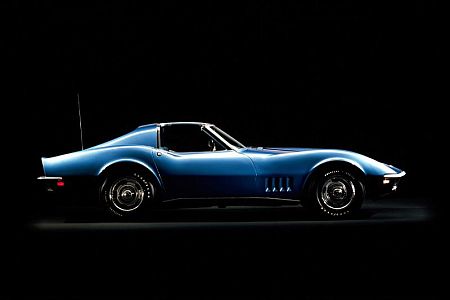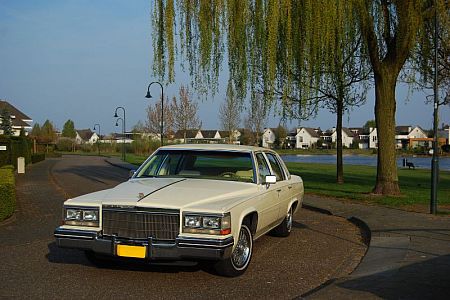Maserati Merak
An exotic entry-level model, the Maserati Merak benefits from its kinship with the Bora.
Maserati Merak vs Bora
The appearance of the Maserati Merak is very similar to that of the Bora. The big distinction, however, is in the V6 engine with which it propels. The latter is precisely what bothers it a little on the enthusiast circuit.
Of course, nobody can ignore the beautiful design by Italian design house Giugiaro, and once you let the melodious sounds of the then state-of-the-art power source sink in, you understand why Maserati ever produced the Merak.

Availability
The Merak is a well-preserved model, as it is estimated that about three quarters of the models produced still exist. However, out of 1830 units produced, this is quite little in absolute terms.
Launch of the GT twin
Everyone can see the kinship with the Bora, an effect of Maserati's intention to launch a twin GT.
Citroën reigned supreme at Maserati in the late 1960s, commissioning Giugiaro to design a duo of related cars, while in Modena the engineers got to work. The brand with the trident was the first to go public in 1971 with the eight-cylinder Bora. After a year followed its lighter variant, the Merak named after a star, which had a V6 engine.
That engine was initially developed for the Citroën SM and only later found its way to the Maserati, with a capacity that grew from 2.7 to 3.0 litres. It didn't stop there, as the Frenchman also donated its eccentric dashboard with single-spoke steering wheel, its high-pressure braking system, its five-speed gearbox and some other elements to the Merak. The principle of brake discs mounted against the transmission was also adopted.

Removable trusses
With the Bora, the Merak shared its car up to the B-pillar, except for the front bumper. The roof stopped abruptly after the cabin, unlike what the most expensive coupé showed, but in order not to violate the aesthetics, Giugiaro drew out two - pre-maintenance removable - trusses.
The chassis differed: the Merak did not adopt the Bora's tubular construction, but had a monocoque with a simplified subframe, sufficient to torque the lighter transaxle V6. At its launch, the Maserati Merak met with press approval on many fronts, although some journalists discovered that the braking system tended to lock up quickly due to the high-pressure circuit.
End of collaboration with Citroën
In 1976, when ties with Citroën were severed, this would give way to a regular vacuum-based system. Other SM elements were also jettisoned as production progressed, including the dashboard at an early stage. The Merak gained its own identity in terms of workplace, but had to cede it afterwards to that of the Bora.
Morak SS
When the Merak was opposed by the Ferrari 308 and Lamborghini Urraco, Maserati did not give in easily and came up with the SS in 1975. Using different carburettors, the SS got 30 extra horsepower.
This would eventually become the best-selling version, while at the other end of the spectrum - also technically - the 2000 GT was introduced. One launched this entry-level version with a two-litre V6 engine in 1977, in response to the Italian tax climate, which penalised large cylinder capacity.

Its performance was disappointing, so they decided not to export this hardly more interesting version in terms of production costs. We identify the 2000 GT by its black bumpers and ditto strips on the flanks. After Maserati retired its heavy V8 GTs one by one and introduced the Biturbo, only the Merak remained. It was sold only sparsely and in 1982 they ceased production.
Maintenance and tips
With regular maintenance and accompanying investment, the Merak is a reliable companion. Unfortunately, neglected examples are more the rule than the exception, so watch what you buy. The costs of repairs and overhauls quickly skyrocket, all the more so because Maserati had relatively many components specially manufactured; they are therefore not interchangeable with more common cars.

Also realise that back then the technology was designed to be used for only a few years and preferably with reasonable frequency: long downtimes have a catastrophic effect on certain components and systems. So drive, drive, drive. It is normal for the engine to have to be taken apart every 60,000 to 80,000 kilometres for a 'light' refresh.
Key-friendliness
On the subject of key-friendliness, this is an object for the advanced. Start a restoration only if you are struggling with a serious surplus of spare time, because given the values of a Merak, it doesn't pay off any time soon.
2000 GT or standard model?
Incidentally, in practice, a 2000 GT is not offered cheaper than the other types. This is partly due to the fact that it is fairly easy to get Citroën SM parts to upgrade it to a heavier version.
Don't immediately put a Merak from the US at the top of your favourites list, as it possesses an unfortunate combination of higher mass and lower power, while chunky bumpers detonate in the beautiful Giugiaro design.
Conclusion
That the Maserati Merak is a picture-perfect car, both externally and internally, no one will disagree. Add the mighty driving experience including the howl of the V6, as well as more favourable purchase prices than V8 models, and the temptation becomes quite strong.




